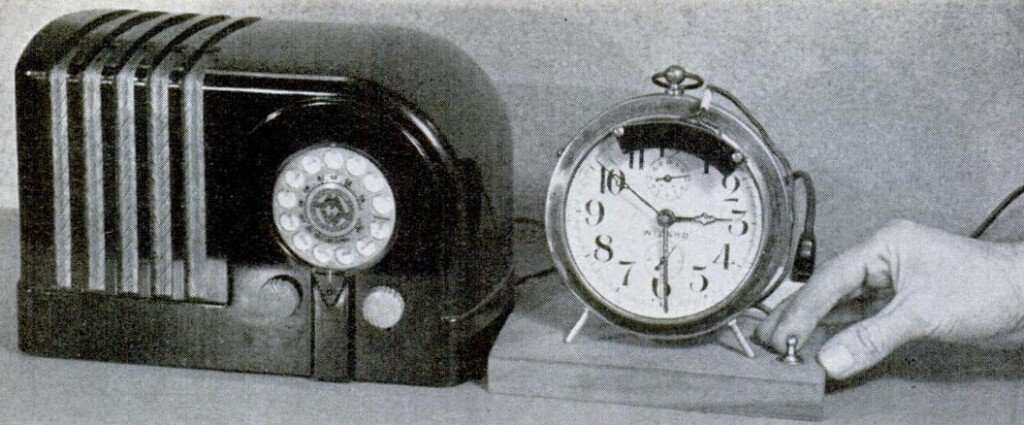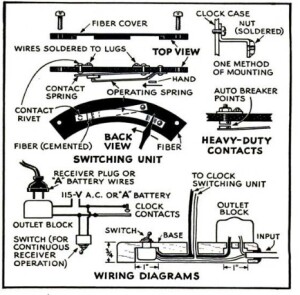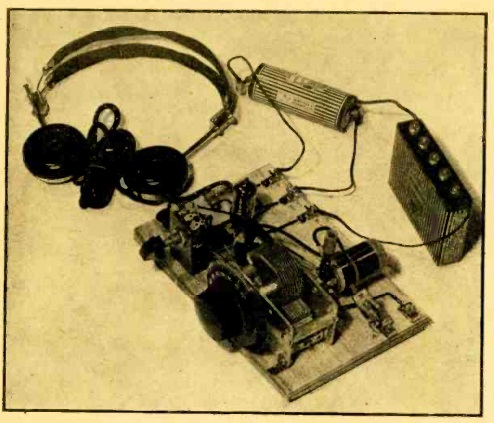
 Eighty years ago, the May 1942 issue of Popular Science offered this solution for those who wanted to make sure they heard the latest war bulletins, but didn’t want the radio on at other times. With this system, the radio would turn itself on hourly, at the top of the hour, to play the latest news report. Then, it would shut itself off automatically until the next one.
Eighty years ago, the May 1942 issue of Popular Science offered this solution for those who wanted to make sure they heard the latest war bulletins, but didn’t want the radio on at other times. With this system, the radio would turn itself on hourly, at the top of the hour, to play the latest news report. Then, it would shut itself off automatically until the next one.
This was accomplished with a clock (preferably an electric one, for better accuracy) modified as shown here. The glass was removed, and the switching unit here was installed. It consisted of two pieces of springy brass. When the minute hand came around, it would close the contacts and turn on the radio. For larger sets with more current draw, it was recommended to use auto breaker points. A switch in parallel would allow you to turn the radio off and on manually.
The recommendation was to set it to come on about 30 seconds before the hour, and shut off six minutes later, which would ensure being able to hear all hourly news broadcasts, with time for the set to warm up.




